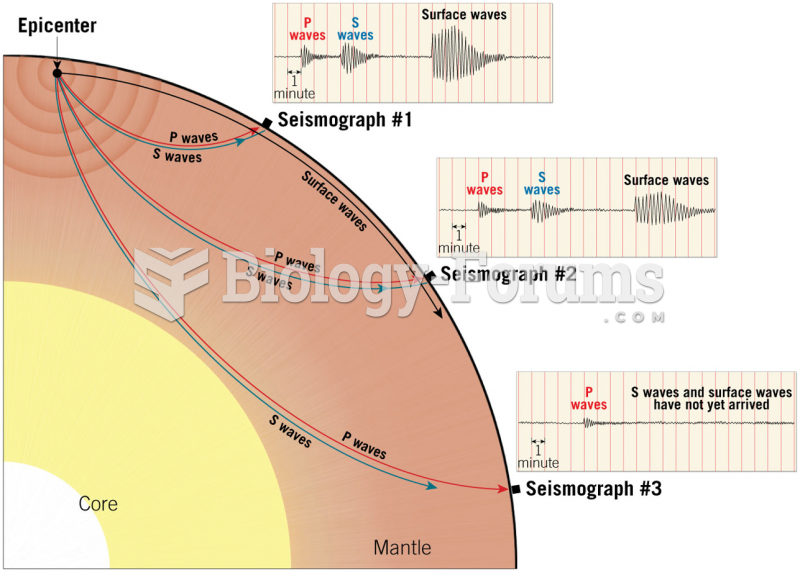Answer to Question 1
ANSWER: Student answers may vary, but overall need to state that Phoenix, Arizona gets very hot during the summer, and a temperature of 90 degrees Fahrenheit with 90 percent relative humidity would produce a heat index of 122 degrees Fahrenheit. Although this weather situation is remotely possible, it is extremely unlikely, as a temperature of 90 degrees Fahrenheit and a relative humidity of 90 percent can occur only if the dew-point temperature is incredibly high (nearly 87 degrees Fahrenheit), and a dew point this high rarely occurs anywhere in the United States, even on the muggiest of days.
Answer to Question 2
ANSWER: An appropriate answer would be that the psychrometer is a common instrument used to obtain dew point and relative humidity. It consists of two liquid-in-glass thermometers mounted side by side and attached to a piece of metal that has either a handle or chain at one end. The thermometers are exactly alike except that one has a piece of cloth (wick) covering the bulb. The wick-covered thermometercalled the wet bulbis dipped in clean (usually distilled) water, while the other thermometer is kept dry. In a sling psychrometer both thermometers are ventilated for a few minutes by whirling the instrument. Water evaporates from the wick and the thermometer cools. The drier the air, the greater the amount of evaporation and cooling. After a few minutes, the wick- covered thermometer will cool to the lowest value possible.
The dry thermometer (commonly called the dry bulb) gives the current air temperature, or dry-bulb temperature. The temperature difference between the dry bulb and the wet bulb is known as the wet-bulb depression. A large depression indicates that a great deal of water can evaporate into the air and that the relative humidity is low. A small depression indicates that little evaporation of water vapor is possible, so the air is close to saturation and the relative humidity is high. If there is no depression, the dry bulb, the wet bulb, and the dew point are the same; the air is saturated and the relative humidity is 100 percent.





